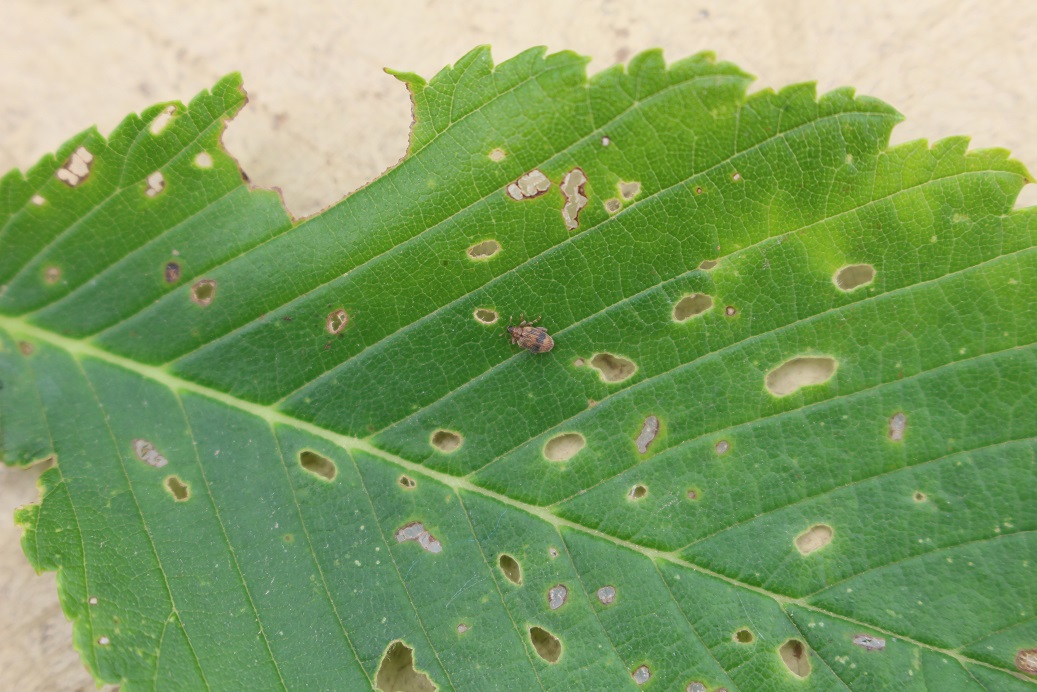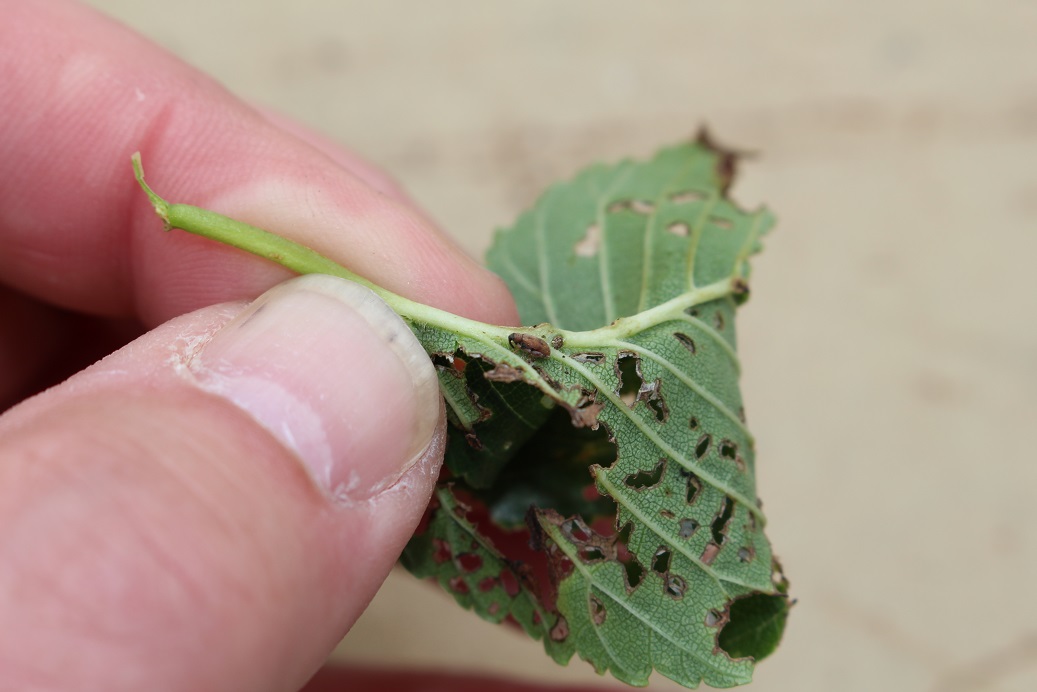–by Dr. Raymond Cloyd
We are seeing damage on elm (Ulmus spp.) trees caused by the larval stage of the European elm flea weevil (Orchestes alni). Larvae are cream-colored, legless (Figure 1),
Figure 1. European elm flea weevil larva
and found in the mines of leaves. Adults are 3.0 mm in length, red-brown in color with black spots or markings on the abdomen or wing covers (Figure 2).
Figure 2. Adult European elm flea weevil.
The mouthpart is shaped-like a snout (Figure 3)
Figure 3. European elm flea weevil adult (note the snout-like mouth)
since they are weevils and the hind legs are thickened and enlarged, which allows the adults to jump when disturbed. Adults are initially active in May, and after mating, females lay eggs in the large mid-veins of new leaves. Eggs hatch into larvae that tunnel through the leaf as they feed (which is occurring now), creating serpentine-like mines that enlarge as larvae mature (Figure 4).
Figure 4. Serpentine mines created by European elm flea weevil larvae.
Larvae eventually transition into a pupal stage, and then adults emerge in May and June. Adults primarily feed on leaf undersides creating small holes on young leaves (Figure 5).
Figure 5. Feeding damage caused by European elm flea weevil adult.
The feeding damage caused by both the larvae and adults will not kill an elm tree; however, extensive feeding may ruin the aesthetic appearance. Adults overwinter under loose bark and in leaf litter under previously infested trees. There is one generation per year in Kansas. Nearly all elm species are susceptible to feeding by the European elm flea weevil especially Siberian elms (Ulmus pumila) and certain elm hybrids with Asian parentage.
Management of European elm flea weevil involves maintaining proper tree health by means of watering, mulching, pruning, and fertilizing. Insecticides may be used to minimize damage; however, insecticides may be difficult to apply to large trees. Insecticides must be applied in May and June in order to suppress adult populations. A number of insecticides may be used including: acephate (Orthene), imidacloprid (Merit), or carbaryl (Sevin). However, if damage is not extensive, especially on large trees, then there be no rationale for using insecticides. For more information regarding European elm flea weevil management contact your county or state extension specialist.




